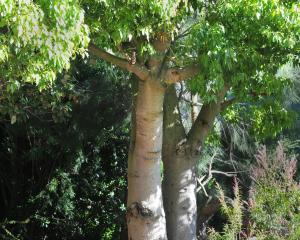Its cluster of pale lilac or white flowers at the branch tips provides a display worthy of any garden, hence it is widely grown in cultivation, both here and overseas.
This bushy shrub has a slightly spreading habit and can grow up to 2m in height.
The small, narrow leaves are dark green and rather shiny with inconspicuous incisions on the margin.
These narrow incisions help distinguish it from many other small-leaved hebe species.
Hebes are generally an easy-care species for the home gardener.
Most have a tidy, rounded growth habit and with the diversity of species to choose from, there is one to suit every garden.
The native plant collection's hebe border is being composted this year and at the same time, the task of pruning is being carried out.
Pruning little and often is a very good philosophy.
However, there are times when plants require more extensive pruning.
Many hebes can be pruned back hard in order to rejuvenate them, as can be seen with a number of the larger plants in the border at the botanic garden.
The genus Hebe is named for the Greek goddess of youth.
Hebe is New Zealand's largest genus of shrubs. Grow hebes in a good soil and full sun.
Compost every couple of years to maintain plant health.
Hebe diosmifolia can be seen around the botanic garden centre on Lovelock Ave or in the hebe border of the New Zealand native plant collection in the upper botanic garden.
Shirley Stuart is curator of the native plant collection at the Dunedin Botanic Garden.











